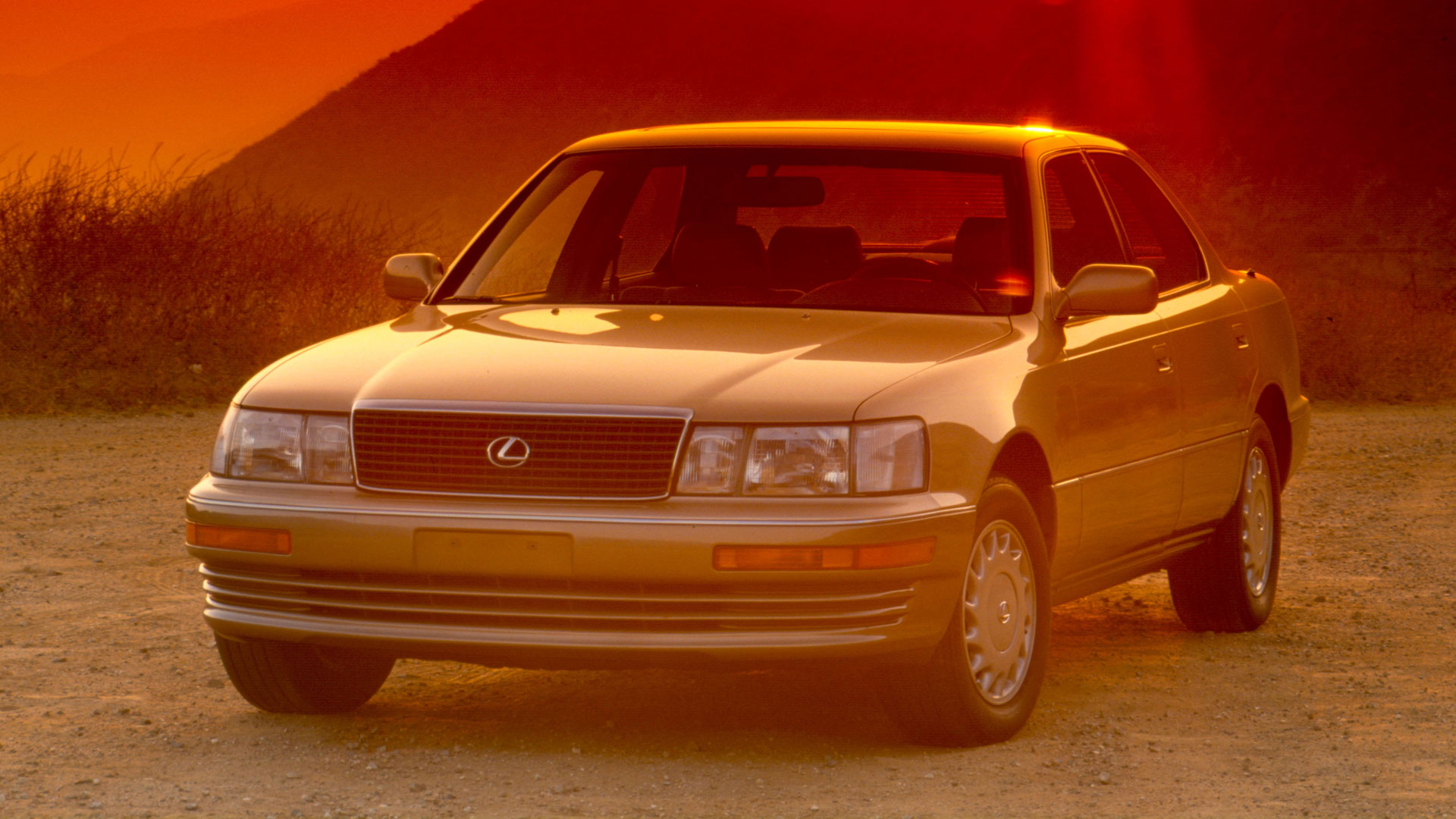
When Chris Goffey tested the Lexus LS 400 for Top Gear in 1990, he claimed that it was “petrifyingly good”. A rather appropriate turn of phrase, because the bosses at Mercedes, BMW and Jaguar must have felt a little petrified when Japan’s first global luxury car wafted into view at the 1989 Detroit Auto Show.
Thirty years on, it would be easy to be a tad dismissive of the LS 400, maybe rolling out the tiresome reference to the ‘Japanese S-Class’ as if this would be a suitable replacement for a fit and proper analysis of the car’s impact on the luxury car market.
Lexus didn’t just get within a hair’s breadth of the luxury establishment, it made itself comfortable at the top table, enjoyed a hearty lobster thermidor lunch with a half a bottle of Chablis, before heading outside to win a three-ball against a German and a Brit.
Building the perfect beast
Building the best car in the world is easier said than done. Armed with a billion dollars and with a team of the best designers and engineers in the business, creating automotive excellence sounds straightforward enough. But expectations are higher at the top of the market, and there’s a long way to fall if you get it wrong.
This reality wasn’t lost on Eiji Toyoda when he launched the Circle F project in 1983. The F stands for ‘Flagship’ – as if to emphasise the task in hand.
Toyota wasn’t entirely a luxury car virgin. But while the Crown and Century could cut it in the domestic market, they were unlikely to make an impact on the global market. Wool fabric seats and lace curtains don’t tend to feature on the list of demands for the majority of luxury car buyers.
Yukiyasu Togo, the president and CEO of Toyota’s US division, was convinced that Toyota could build a luxury car. More importantly, he knew that there was a gap in the North American market for such a vehicle. A generation of increasingly affluent ‘baby boomers’ were growing out of their Toyota compacts and sedans and upgrading to something German.
Baby come back
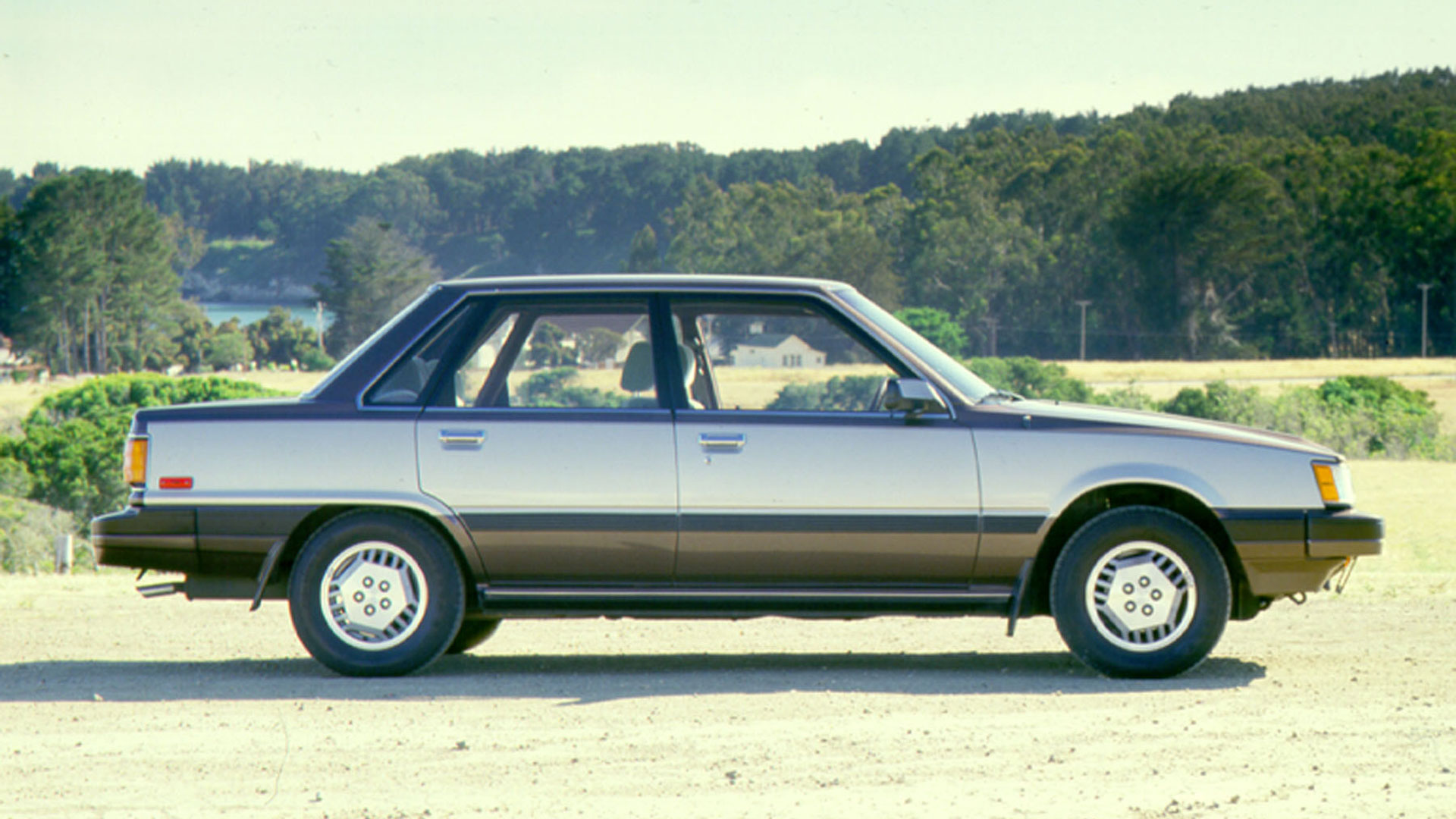
Toyota was losing loyal customers left, right and centre – a Camry had neither the brand or the prestige to join the ‘baby boomers’ on their climb up the social ladder. Reintroducing the Crown was given serious consideration, but it was too small, underpowered and out of touch with American tastes.
Which is why a team of researchers were dispatched to the US to get inside the hearts and minds of the American luxury car buyer. Hundreds of potential buyers were interviewed, with videos sent over to the designers and engineers in Japan. Such insight proved to be invaluable during the development of the LS 400 – no guesswork was involved, and nothing was left to chance.
For the next six years, the team led by chief engineer Ichiro Suzuki sweated over the tiniest details in the pursuit of greatness. Meanwhile, the marketing team had to settle the small matter of what to call the car.
It turned out to be a launch, not just of a car, but an entirely new brand. The original plan was to badge it as a luxury Toyota, but research showed that this wouldn’t cut it, so a new brand was required. But what to call it?
Say my name
More than 200 names were considered, including Alexis, Calibre, Chaparel, Vectre and Verone, but Lexus was chosen after project manager John French had a play with some letters. The ‘A’ was dropped from Alexis to create Lexis, with the ‘i’ substituted for a ‘u’ because it sounded smoother and more upmarket.
Meanwhile, the engineers were breaking new ground and charting fresh waters with the development of the luxury car. From the outset, Ichiro Suzuki insisted that the LS 400 should feel the same at 50,000 miles as it did when it rolled out of the factory, which created an unbelievable amount of work for this team.
No fewer than 450 prototypes were built – the first one was finished in 1985 – with the exterior design approved in 1987 after the production of 14 full-scale models. The car visited a wind tunnel on 50 different occasions, with the engineers placing microphones all over the vehicle in a quest to eliminate wind noise.
Supra trooper
It underwent three million miles of testing, including high-speed runs on the German Autobahn. At the time, Toyota had just the one car that could travel at speeds in excess of 110mph, but the Supra was aimed at a different clientele.
The obsessive nature of the development extended to the creation of the stiffest body shell, featuring welds 1.5 times stronger than a regular car. The development also included the world’s first laser welding techniques, while the computer-measured panel gaps were designed to be as narrow as possible.
Interestingly, the distance between the bonnet and front wings, and boot lid and rear quarter panels were designed not to be parallel. This was so that when the car was viewed head-on, the perspective of a slightly tapered gap actually appears more parallel.
Other details included windscreen wipers angled to change position as the car’s speed increased, an automatic transmission with its own ECU for smoothness, a prop shaft engineered to be vibration free, and double wishbones at each corner for dynamic handling. Such was the blend of ride comfort and sharp cornering, the optional air suspension was almost surplus to requirement.
Power and glory
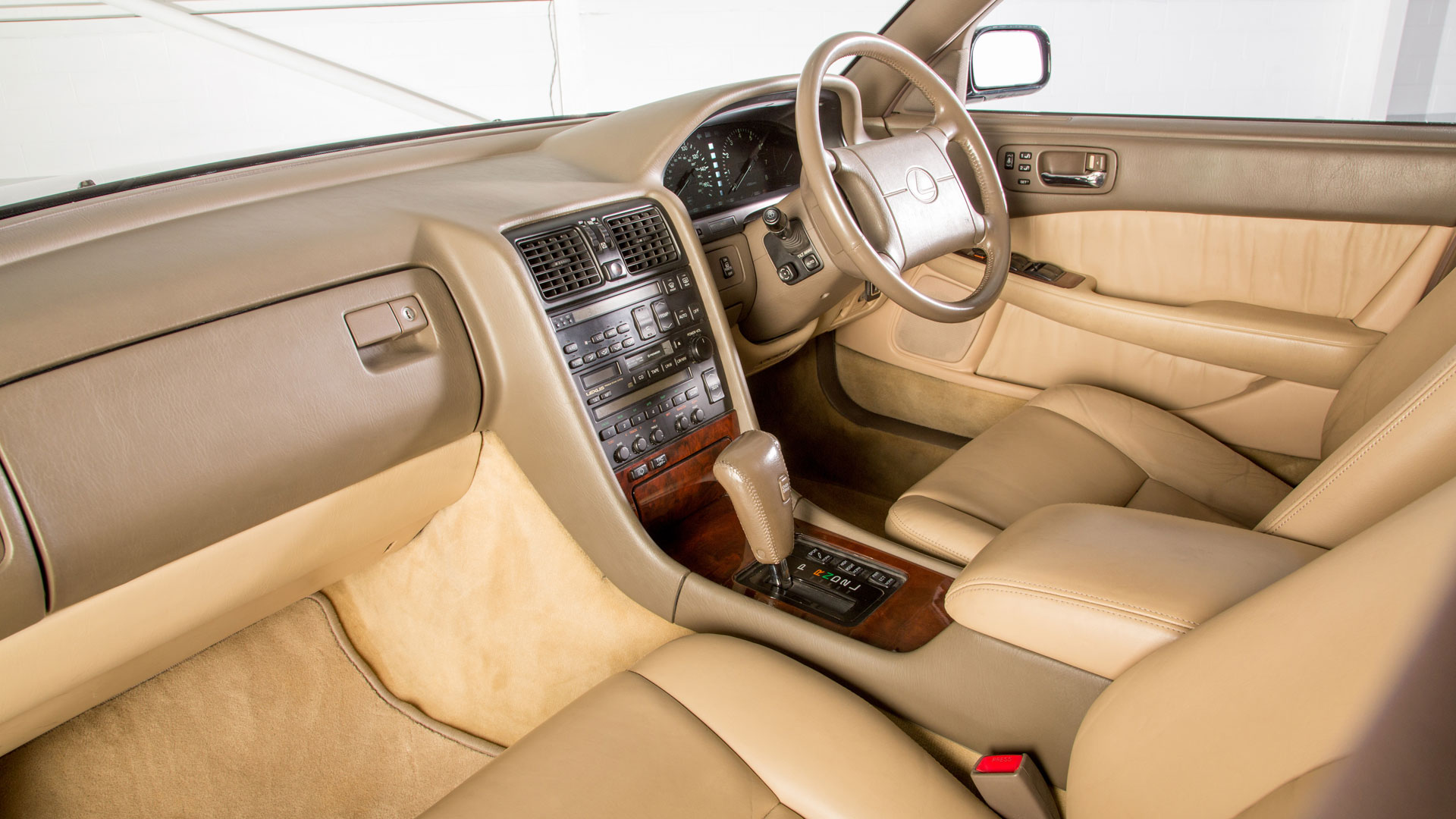
On the inside, Toyota spent two years deciding on the right tanning methods, textures and feel for the upholstery, with the designers calling upon the help of Yamaha’s experience with pianos and violins when creating the wood finish.
In truth, the interior felt somewhere between American and German styles, and while the quality was first-rate, it lacked a genuine wow factor. That was until you fired up the 4.0-litre V8, at which point the black fascia would reveal a set of Optitron gauges that glowed with a 3D effect. A subtle and sophisticated take on the more traditional dials.
In creating the 1UZ-FE engine, Toyota tested a total of 973 prototypes as it endeavoured to build the smoothest and most efficient V8 in the world. Lightweight aluminium cam followers in the valve train were designed to maintain smoothness at high revs, with the engineers reducing the machining tolerances of all moving parts by up to 50 percent.
The result was a super-smooth and virtually vibration-free engine, as ably demonstrated by the ‘glass of water test’. Try perching a glass on the motor of the LS 400’s contemporary rivals, and you’d be left with a soggy engine bay.
Appetite for destruction
Toyota left nothing to chance in the pursuit of perfection – all parts were tested to destruction and subjected to an accelerated ageing process. Little wonder, then, that the final production version caused such a stir in 1989. There were no concepts or teaser models before Detroit – Toyota went straight for the jugular, catching the Germans off-guard.
Although the LS 400 was built alongside the Soarer and Supra at Toyota’s Tahara plant, it had its own exclusive assembly line and was subjected to 1,600 different quality checks. No LS 400 would leave the factory until it was fit to woo Mr Merc, Mr BMW and Mr Jag.
In a rather ingenious and mischievous move, the great and the good of the automotive press were invited to Germany for the international press launch. Sure, it meant that the journos could experience the smooth operator on the de-restricted Autobahns of Germany, but it was no coincidence that Lexus was playing in its rivals’ backyard.
Shiny happy customers
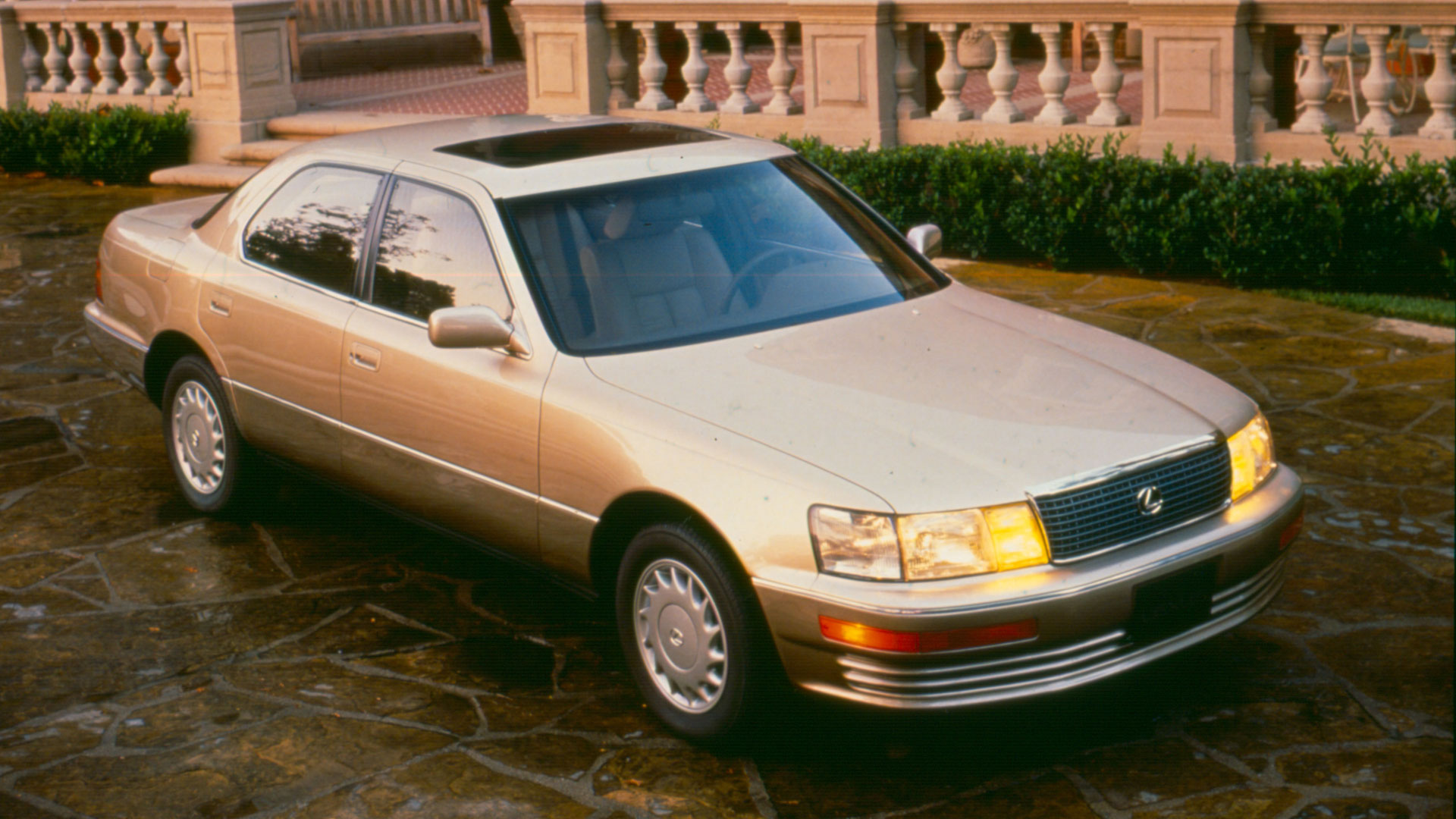
Lexus and the LS 400 were scoring points all over the yard. Toyota had thought of everything – design, engineering, PR, marketing and customer relations. Even when a brake light recall threatened to take the shine off the LS 400’s polished image in the US, Lexus scored points by sending technicians to the houses of each owner to rectify the problem before Christmas.
And, in a masterclass of turning a negative into a positive, each car was even treated to a valet and a full tank of fuel. Brilliant.
All that American research paid off. The initial batch of 1,000 cars was snapped up, and by the end of 1989, Lexus had hit its forecast of 16,000 sales. It was sold alongside the Camry-based ES 250 with a remarkably low price tag of $35,000, which led to BMW circulating rumours that Lexus was making a loss on every car it sold.
One could argue that its rivals remained just ahead of the LS 400 in key departments – the S-Class in terms of quality and refinement, the 7 Series for driver appeal, and the XJ6 for the cabin and brand heritage. But the LS 400 offered consistent qualities across the board, delivering exceptional value for money.
Absolutely flawless
‘In all our years of evaluating cars, we’ve rarely had to work this hard to discover faults with a particular automobile,’ proclaimed Motorweek in a gushing review.
Car magazine was similarly positive, saying it beat the S-Class ‘hands down’, judging it to be better than the Rolls-Royce Silver Spirit. Was it perfect? Of course not, but the fact that it came mightily close to perfection is remarkable for a company with no experience of building a luxury car for a global audience.
Opinions varied – some road testers loved the quality of the leather, while others said it felt cheap alongside its rivals. It was a similar story with the wood, switchgear and plastics. With the benefit of hindsight, the LS 400 probably lacked one crucial element – prestige.
At the time, the Lexus logo on the centre of the steering wheel had no heritage and zero provenance. It might have featured a banging stereo, a trick fascia and a level of finish to rival the very best, but without the brand equity, it would be playing catch up for years to come.
Anti-establishment
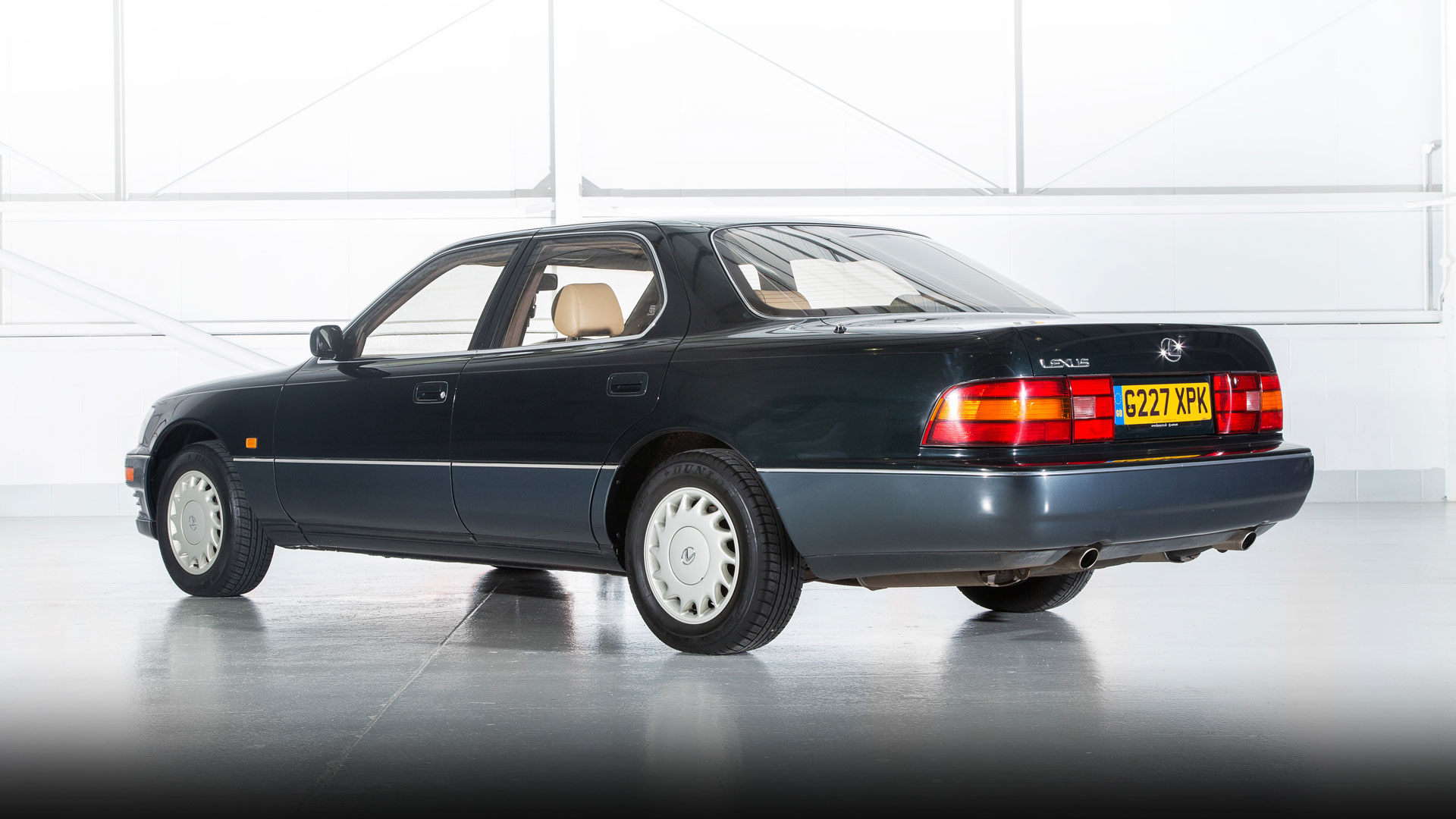
The LS 400 arrived in the UK in 1990 and soon became the choice of the enlightened and the educated. Armed with a price tag around £35,000, Lexus had the ammunition to rip down the establishment in a display of stealth-like precision.
Only a lack of brand awareness and the fact that the LS 400 was being sold alongside the likes of the Starlet and Corolla in 44 of Toyota’s 200 or so dealers could hold it back. Arriving in the midst of a recession didn’t help, but the LS 400 was good enough to enable Lexus to establish a foothold on the luxury car mountain, and it has been climbing ever since.
Today, the Lexus LS 400 remains a canny choice for the used car buyer in search of luxury on a budget. While spending sub-£3,000 on an equivalent German car would like putting your life savings in the hands of a Las Vegas gambler, the LS 400 is a less risky affair.
Why settle for a ‘German LS’ when you can drive the best car in the world?
Read more
- The Toyota limo that’s been 21 years in the making
- New Lexus LS has the world’s largest head-up display
- The new Lexus flagship is a luxury yacht
Toyota had just the one car that could travel at speeds in excess of 110mph, but the Supra was aimed at a different clientele it’s really true?
Yes, it’s true